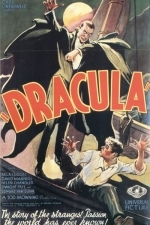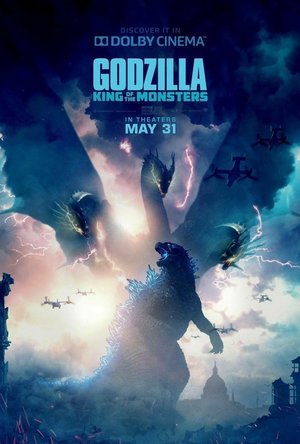Search

NodeBeat - Playful Music for All
Music and Entertainment
App
◆ Join over 2 million others using NodeBeat! ◆ Make music with NodeBeat, the intuitive and fun...

Ferrite Recording Studio
Music
App Watch
Ferrite combines the ease-of-use of a “voice memo” audio recorder, with a versatile multi-track...
music

Magic Window - Living Pictures
Health & Fitness and Lifestyle
App
Turn your iPhone or iPad into a window with a million dollar view. Enjoy beautiful timelapse views...
Bob Mann (459 KP) rated Lion (2016) in Movies
Sep 29, 2021
Lost in Train-station.
As January progresses, the quality Oscar films just keep on coming! India’s vibrant and teeming tapestry of life is a natural gift for film-makers, without a word needing to be spoken, and director Garth Davis – in an impressive feature film debut – utilizes that backdrop to the max.
In a true life story, five-year-old Saroo (Sunny Pawar, in an astonishingly adept child performance) is accidentally separated from his family in the Madhya Pradesh region of Western India and goes on a journey by train of hundreds of miles to Calcutta: a city full of people who don’t even speak his language.
Lost, alone and facing the perils of a street child in a dangerous city, Saroo is eventually adopted by a kindly Australian couple (played by Nicole Kidman (“Before I Go To Sleep“) and David Wenham (Faramir in “The Lord of the Rings”)).
Growing up in a comfortable, loving, but not – ultimately – idyllic home environment, Saroo (now Dev Patel, “The Best Exotic Marigold Hotel”) grows up and in his late teens goes to Melbourne University to study Hotel Management (Dev Patel? Hotel Management? What were the odds?!). While there, memories of the past resurface and an obsessive need to trace his Indian origins takes hold, disrupting both his career plans and his relationship with the love of his life Lucy (Rooney Mara, “Carol“). But with a remembered home-town name that doesn’t exist, only hazy memories of the train station he departed from, and thousands and thousands of train stations across India, how could he ever succeed?
India is enormously photogenic and cinematographer Greig Fraser (“Rogue One“, “Foxcatcher“) takes the maximum advantage of that with some memorable and dramatic landscapes: work that has been Oscar nominated. Also Oscar nominated and contributing strongly to the look and feel of the film is a well-judged and effectively used piano score by Volker Bertelmann and Dustin O’Halloran.
In the acting stakes, Dev Patel gives his best ever performance and his Oscar nomination – curiously for Best Supporting actor since, I presume, Sunny Pawar has the most screen time – is very well deserved. A moving performance, particularly at the tearful end of the movie, for which a box of tissues is recommended.
Nicole Kidman, not an actress I have ever hugely warmed to, is excellent here as the fragile adoptive mother, despite having to sport a crazy red curly wig. Another Oscar nomination.
Also worthy of note is young Abhishek Bharate as Saroo’s brother Guddu: the touching chemistry between the thieving young rascals at the start of the movie grounds the whole family relationship that’s sets up the emotional heart of the subsequent quest.
Luke Davies’ adapted screenplay is also Oscar nominated, although perhaps not as deserving to win as some of the other nominees. I would (naively perhaps) assume that adapting a screenplay from a true-life story must be an easier task, since the facts have to speak for themselves. But besides that, while the first half of the film, with the scenes in India, is exceptionally good, the Australian section became a more patchy with the motivations of Saroo’s actions and the impact they have on his adoptive family not feeling completely fleshed out.
While I’m sure being a street urchin in Calcutta in the mid-80’s was a horribly difficult and perilous existence, the screenplay paints the sense that that almost EVERY male in the city is either a pedophile or hopelessly corrupt: something that if I was a Calcutta resident I would likely take offence to.
However, this is a hugely involving and enjoyable movie, and a “Best Film” rounds off the impressive haul of six Oscar nominations. You might be cynical and view the subject matter as being comfortable Oscar-bait… but you can hardly argue about the absolute quality of the film-making on show here.
By the way, if you are curious as to where the title of the film comes from, you need to wait until the end titles: a masterly touch that I really liked!
The end titles also lay out the fact that the perils of street kids in India is still real and present, and the film is supporting charitable work to help. If you were moved by the film (as I was) you can make a donation at http://lionmovie.com (as I did)!
Highly recommended.
In a true life story, five-year-old Saroo (Sunny Pawar, in an astonishingly adept child performance) is accidentally separated from his family in the Madhya Pradesh region of Western India and goes on a journey by train of hundreds of miles to Calcutta: a city full of people who don’t even speak his language.
Lost, alone and facing the perils of a street child in a dangerous city, Saroo is eventually adopted by a kindly Australian couple (played by Nicole Kidman (“Before I Go To Sleep“) and David Wenham (Faramir in “The Lord of the Rings”)).
Growing up in a comfortable, loving, but not – ultimately – idyllic home environment, Saroo (now Dev Patel, “The Best Exotic Marigold Hotel”) grows up and in his late teens goes to Melbourne University to study Hotel Management (Dev Patel? Hotel Management? What were the odds?!). While there, memories of the past resurface and an obsessive need to trace his Indian origins takes hold, disrupting both his career plans and his relationship with the love of his life Lucy (Rooney Mara, “Carol“). But with a remembered home-town name that doesn’t exist, only hazy memories of the train station he departed from, and thousands and thousands of train stations across India, how could he ever succeed?
India is enormously photogenic and cinematographer Greig Fraser (“Rogue One“, “Foxcatcher“) takes the maximum advantage of that with some memorable and dramatic landscapes: work that has been Oscar nominated. Also Oscar nominated and contributing strongly to the look and feel of the film is a well-judged and effectively used piano score by Volker Bertelmann and Dustin O’Halloran.
In the acting stakes, Dev Patel gives his best ever performance and his Oscar nomination – curiously for Best Supporting actor since, I presume, Sunny Pawar has the most screen time – is very well deserved. A moving performance, particularly at the tearful end of the movie, for which a box of tissues is recommended.
Nicole Kidman, not an actress I have ever hugely warmed to, is excellent here as the fragile adoptive mother, despite having to sport a crazy red curly wig. Another Oscar nomination.
Also worthy of note is young Abhishek Bharate as Saroo’s brother Guddu: the touching chemistry between the thieving young rascals at the start of the movie grounds the whole family relationship that’s sets up the emotional heart of the subsequent quest.
Luke Davies’ adapted screenplay is also Oscar nominated, although perhaps not as deserving to win as some of the other nominees. I would (naively perhaps) assume that adapting a screenplay from a true-life story must be an easier task, since the facts have to speak for themselves. But besides that, while the first half of the film, with the scenes in India, is exceptionally good, the Australian section became a more patchy with the motivations of Saroo’s actions and the impact they have on his adoptive family not feeling completely fleshed out.
While I’m sure being a street urchin in Calcutta in the mid-80’s was a horribly difficult and perilous existence, the screenplay paints the sense that that almost EVERY male in the city is either a pedophile or hopelessly corrupt: something that if I was a Calcutta resident I would likely take offence to.
However, this is a hugely involving and enjoyable movie, and a “Best Film” rounds off the impressive haul of six Oscar nominations. You might be cynical and view the subject matter as being comfortable Oscar-bait… but you can hardly argue about the absolute quality of the film-making on show here.
By the way, if you are curious as to where the title of the film comes from, you need to wait until the end titles: a masterly touch that I really liked!
The end titles also lay out the fact that the perils of street kids in India is still real and present, and the film is supporting charitable work to help. If you were moved by the film (as I was) you can make a donation at http://lionmovie.com (as I did)!
Highly recommended.
Purple Phoenix Games (2266 KP) rated Fantasy Ranch in Tabletop Games
Jun 12, 2019 (Updated Jun 12, 2019)
Little known fact: my family used to be involved with local harness racing and horse training. Not much actually rubbed off on me, personally, but I do remember going to the stables to visit with the horses, and I was even allowed to ride the stable goat since I wasn’t yet big enough to get on the horses. Ahh, memories. So when I heard that a game existed with a horse ranching theme, I just HAD to get it to the table. Is it a good game though? Let’s find out! (spoilers: IT’S EXCELLENT!)
DISCLAIMER: The game comes with three modes of difficulty AND an included children’s game that also can be played on three modes of difficulty. For this review we are concentrating only on adult mode two. We felt mode one was too introductory, but we did not want to go all in right away on mode three. -T
As with most board games, you are trying to amass trophies (VP) and the winner at the end of five rounds is the rancher with the most trophies. On your turn you can take one Limited (standard) Action and as many Free Actions as you would like. Limited Actions include: buy a horse, buy a location on your ranch board, or farm your ranch for goods. Free Actions include: sell a horse, move horses to/from your home area to/from a different area on your ranch board, or trade goods at a 2:1 ratio. Once every player has taken their turn, you enter a show using the horses you have collected.
Buying a horse requires different amounts of food (in carrots) that you gain from different actions (farming your ranch, selling a horse). Luckily, spending food is a one-time action and you don’t have to feed your horses every turn. A great improvement over other “feed your villagers” games, in my opinion – yeah, I said it. Buying a location on your ranch board/playmat requires “tack,” which is symbolized by boot tokens (as seen below). You can always get more food and tack by farming your ranch, and you receive six goods of any combination, but that’s a Limited Action and prevents you from doing the other actions.
Selling a horse is easy, yet the separation anxiety is real, as you simply discard the horse for the amount of food it costs to purchase. Moving horses is easy too – your Home area of your ranch/playmat can only hold so many horses, so you will need to move horses of certain types to unlocked (purchased) matching areas on your ranch. This is important, as you cannot keep buying red horses or you will certainly run out of room for them, even if you unlock the red area on your ranch board. Plus unlocking sections of your ranch provides you with trophies at game end. The last free action is trading goods, which you do at a 2:1 ratio. So trade in two food for a tack or vice versa.
At shows you use horses for their specific specialty skills plus a die roll. Each horse has specialty in one area, and some skill in other areas. The number associated with a skill icon indicates the starting skill “strength” that you will add to your die roll. You roll all three dice of your color, take the highest result from the roll, and add the skill strength of the horse skill. That’s your score for the show. The highest number is awarded 1st place and the rewards printed, and so on and so forth for the other placing horses. This could result in more food or tack, or even your choice of horses for free from the sales barn.
On the very last turn of the game you will compete in three shows (instead of the normal two shows at the end of each turn) and can only use World Class horses, or buy your way into the show with food. The show process is the same, but it is the final push to earn as many trophies as possible before game end. And that’s it!
Components: This game is FULL of components. It’s a pretty stocked and heavy box, but still only the size of a Ticket to Ride box. The playmats, game boards, and cardboard chits are all of really great quality. The cards are great quality as well with photos of real existing horses (as well as the photos of real existing ranches on the giant ranch cards that are essentially beautiful player reference cards and resource holders). The best components of the game are the super cute little horeeples (oh no, that can’t possibly be correct). Horse-meeples. They come in different colors to match the areas on your ranch that you need to unlock and move them into so you don’t overcrowd your Home area. Even though my copy came with a green horse who lost his front legs, we know that he competes hard and lives his best life. The art is really really great and, though busy on the board at times, the game looks really good on the table. No qualms with the components on this one at all.
Here’s what I really like about this one. It’s a euro through and through, but it’s a euro that is actually exciting, with a unique theme, and one that I genuinely cannot wait to play again. I want to try mode three as soon as I can, and I really want to introduce my son to the game as soon as he is able to handle it. I am finding it really really hard to think of a game that comes ready to play three ways for adults, has components included to play the game three ways with children, and is actually super fun. I can’t think of any. This game is truly in a class by itself.
I love that no matter how tactical you play or how strategic you want to make it, sometimes the dice love/hate you and it could make all the difference. As you can see in the scores, we all love it (with the exception of my cousin Tony who rated it a three because of the dice – WHICH is odd because it is his father that was the harness racing jockey of the family). This review would have been live a week ago, but immediately after playing last weekend Josh said he would like to bring it home to play with his family. His wife is from Kentucky, and they kinda like horses and horse racing there. Well, his wife and son also rated this game out of 6. His wife gave Fantasy Ranch a 15 and his son rated it a 16. As that completely throws off my rating scale I did not add them, but as you can see we at Purple Phoenix Games give this one a very boot-kickin’ 19 / 24. If only we hadn’t invited Tony over to destroy the scores… We highly recommend you check this winner out. Seriously, it’s great.
https://purplephoenixgames.wordpress.com/2019/06/04/fantasy-ranch-review/
DISCLAIMER: The game comes with three modes of difficulty AND an included children’s game that also can be played on three modes of difficulty. For this review we are concentrating only on adult mode two. We felt mode one was too introductory, but we did not want to go all in right away on mode three. -T
As with most board games, you are trying to amass trophies (VP) and the winner at the end of five rounds is the rancher with the most trophies. On your turn you can take one Limited (standard) Action and as many Free Actions as you would like. Limited Actions include: buy a horse, buy a location on your ranch board, or farm your ranch for goods. Free Actions include: sell a horse, move horses to/from your home area to/from a different area on your ranch board, or trade goods at a 2:1 ratio. Once every player has taken their turn, you enter a show using the horses you have collected.
Buying a horse requires different amounts of food (in carrots) that you gain from different actions (farming your ranch, selling a horse). Luckily, spending food is a one-time action and you don’t have to feed your horses every turn. A great improvement over other “feed your villagers” games, in my opinion – yeah, I said it. Buying a location on your ranch board/playmat requires “tack,” which is symbolized by boot tokens (as seen below). You can always get more food and tack by farming your ranch, and you receive six goods of any combination, but that’s a Limited Action and prevents you from doing the other actions.
Selling a horse is easy, yet the separation anxiety is real, as you simply discard the horse for the amount of food it costs to purchase. Moving horses is easy too – your Home area of your ranch/playmat can only hold so many horses, so you will need to move horses of certain types to unlocked (purchased) matching areas on your ranch. This is important, as you cannot keep buying red horses or you will certainly run out of room for them, even if you unlock the red area on your ranch board. Plus unlocking sections of your ranch provides you with trophies at game end. The last free action is trading goods, which you do at a 2:1 ratio. So trade in two food for a tack or vice versa.
At shows you use horses for their specific specialty skills plus a die roll. Each horse has specialty in one area, and some skill in other areas. The number associated with a skill icon indicates the starting skill “strength” that you will add to your die roll. You roll all three dice of your color, take the highest result from the roll, and add the skill strength of the horse skill. That’s your score for the show. The highest number is awarded 1st place and the rewards printed, and so on and so forth for the other placing horses. This could result in more food or tack, or even your choice of horses for free from the sales barn.
On the very last turn of the game you will compete in three shows (instead of the normal two shows at the end of each turn) and can only use World Class horses, or buy your way into the show with food. The show process is the same, but it is the final push to earn as many trophies as possible before game end. And that’s it!
Components: This game is FULL of components. It’s a pretty stocked and heavy box, but still only the size of a Ticket to Ride box. The playmats, game boards, and cardboard chits are all of really great quality. The cards are great quality as well with photos of real existing horses (as well as the photos of real existing ranches on the giant ranch cards that are essentially beautiful player reference cards and resource holders). The best components of the game are the super cute little horeeples (oh no, that can’t possibly be correct). Horse-meeples. They come in different colors to match the areas on your ranch that you need to unlock and move them into so you don’t overcrowd your Home area. Even though my copy came with a green horse who lost his front legs, we know that he competes hard and lives his best life. The art is really really great and, though busy on the board at times, the game looks really good on the table. No qualms with the components on this one at all.
Here’s what I really like about this one. It’s a euro through and through, but it’s a euro that is actually exciting, with a unique theme, and one that I genuinely cannot wait to play again. I want to try mode three as soon as I can, and I really want to introduce my son to the game as soon as he is able to handle it. I am finding it really really hard to think of a game that comes ready to play three ways for adults, has components included to play the game three ways with children, and is actually super fun. I can’t think of any. This game is truly in a class by itself.
I love that no matter how tactical you play or how strategic you want to make it, sometimes the dice love/hate you and it could make all the difference. As you can see in the scores, we all love it (with the exception of my cousin Tony who rated it a three because of the dice – WHICH is odd because it is his father that was the harness racing jockey of the family). This review would have been live a week ago, but immediately after playing last weekend Josh said he would like to bring it home to play with his family. His wife is from Kentucky, and they kinda like horses and horse racing there. Well, his wife and son also rated this game out of 6. His wife gave Fantasy Ranch a 15 and his son rated it a 16. As that completely throws off my rating scale I did not add them, but as you can see we at Purple Phoenix Games give this one a very boot-kickin’ 19 / 24. If only we hadn’t invited Tony over to destroy the scores… We highly recommend you check this winner out. Seriously, it’s great.
https://purplephoenixgames.wordpress.com/2019/06/04/fantasy-ranch-review/
Acanthea Grimscythe (300 KP) rated Bonfire in Books
May 16, 2018
This was first posted on <I><a href="http://theghastlygrimoire.com"; target="new">The Ghastly Grimoire</a></I>.
After completing this book, I think it’s safe to say that my reading slump has finally come to an end. I devoured Krysten Ritter’s debut novel, Bonfire, with a hunger I haven’t felt in months. If you take into account that I’m from a small town of a whopping fifteen hundred people, it’s easier to realize how much I am able to relate to the main character of this book, Abigail Williams. That, and Ritter hits on some nostalgia too, because in a way, Bonfire reads like Erin Brokovich meets Sweet Home Alabama, with distinctly darker notes.
Character development plays a vital role in how a book turns out. If your cast is too flat, it makes the book a total bore. On the other hand, if you’ve got characters that are dynamic and, in the case of several individuals in Bonfire, two-faced, the book is far more likely to entertain. In this area, Ritter has excelled at creating that small-town feel with many of the types of people those living in small towns meet. Let’s face it, even with Abigail moving to Chicago, there’s always those people who get out. Sometimes they come back, sometimes they’re gone for good. (In my case, I chose to come back.)
Plotwise, Ritter keeps the ball rolling. I didn’t feel like the story was dragging at any point. In fact, it’s the way that the story continues to unfold that kept me up until three this morning finishing it. Bonfire plays host to a story within a story, taking the corrupt corporations one step beyond contamination and into a far deeper, far worse crime. Just when things appear over, an entirely new turn keeps the story going. I won’t lie: I nearly bawled last night while I finished reading it.
There is only one aspect of this book that truly miffed me, and it sorta deals with the romance aspect. As many of my readers know, I abhor romance plots. Especially those that seem forced, rather than natural. That said, I really don’t want to divulge any spoilers, but I will say this: for being such a strong, independent character, there are some actions that Abigail Williams takes in this book that simply aren’t natural. They feel incredibly forced and out of character, and I can’t help but think it’s there more as a cop-out for the final twist in the story than going about it in some other clever manner.
That said, after finishing Bonfire, I feel it is safe to say that this debut novel is worth reading. Initially, I nearly forgot I had it until I saw it was one of the options for this month’s Book of the Month Club. Considering I’m very particular, I almost chose it before realizing I already had it technically. So if you’re wanting to pick it up cheap, there you go. (I’m actually still debating grabbing it through Book of the Month Club myself, because hey! I loved it.)
I would like to thank Penguin’s First to Read program for providing me with a copy of this book for the purpose of unbiased review.
After completing this book, I think it’s safe to say that my reading slump has finally come to an end. I devoured Krysten Ritter’s debut novel, Bonfire, with a hunger I haven’t felt in months. If you take into account that I’m from a small town of a whopping fifteen hundred people, it’s easier to realize how much I am able to relate to the main character of this book, Abigail Williams. That, and Ritter hits on some nostalgia too, because in a way, Bonfire reads like Erin Brokovich meets Sweet Home Alabama, with distinctly darker notes.
Character development plays a vital role in how a book turns out. If your cast is too flat, it makes the book a total bore. On the other hand, if you’ve got characters that are dynamic and, in the case of several individuals in Bonfire, two-faced, the book is far more likely to entertain. In this area, Ritter has excelled at creating that small-town feel with many of the types of people those living in small towns meet. Let’s face it, even with Abigail moving to Chicago, there’s always those people who get out. Sometimes they come back, sometimes they’re gone for good. (In my case, I chose to come back.)
Plotwise, Ritter keeps the ball rolling. I didn’t feel like the story was dragging at any point. In fact, it’s the way that the story continues to unfold that kept me up until three this morning finishing it. Bonfire plays host to a story within a story, taking the corrupt corporations one step beyond contamination and into a far deeper, far worse crime. Just when things appear over, an entirely new turn keeps the story going. I won’t lie: I nearly bawled last night while I finished reading it.
There is only one aspect of this book that truly miffed me, and it sorta deals with the romance aspect. As many of my readers know, I abhor romance plots. Especially those that seem forced, rather than natural. That said, I really don’t want to divulge any spoilers, but I will say this: for being such a strong, independent character, there are some actions that Abigail Williams takes in this book that simply aren’t natural. They feel incredibly forced and out of character, and I can’t help but think it’s there more as a cop-out for the final twist in the story than going about it in some other clever manner.
That said, after finishing Bonfire, I feel it is safe to say that this debut novel is worth reading. Initially, I nearly forgot I had it until I saw it was one of the options for this month’s Book of the Month Club. Considering I’m very particular, I almost chose it before realizing I already had it technically. So if you’re wanting to pick it up cheap, there you go. (I’m actually still debating grabbing it through Book of the Month Club myself, because hey! I loved it.)
I would like to thank Penguin’s First to Read program for providing me with a copy of this book for the purpose of unbiased review.
RəX Regent (349 KP) rated Dracula (English) (1931) in Movies
Mar 7, 2019
Where it all began...
Contains spoilers, click to show
The year was 1931: Two years after the success of The Jazz Singer and the final introduction of sound movies into the mainstream, sound was still revolutionising the industry. But in 1931, a bit like 3D now, there was still much confusion over to how make films, with directors, producers and actors alike, were still moving over from the suddenly dated silent era, with varying success.
Tod Browning was a man who would unfortunately find little success in the sound era, but not necessarily because he couldn't move with the times, but because his career was derailed a couple of years later by his disturbing horror pic, Freaks.
Dracula was shot THREE times. One, this one, was the conventional sound version that we all know. An other was shot at night and in Spanish for the benefit of that audience, which the studio supposedly preferred. This was quite common at this time, but little known nowadays. And the third was a straight forward silent version for the many theatres still un-equipped to handle sound.
But the styles of the silent era are all over this film. From the long silent reactions shots and the over acting, especially by Bela Lagosi in the titular role. This was also the adaptation of the stage adaptation of Bram Stoker's chiller, and was faithfully adapted from that source, hence the lack of more complex special effects, with bats on strings and fog machines, over more cinematic effects.
The transformation scenes for example, where the Count morphs from a bat to the undead human occur off-screen, rather than some form of cross fade etc. Is this a choice driven by lack of money? Lack of cinematic ambition of a choice to stick to the stage material? To be honest, I have too little knowledge or experience of Tod Browning's work to suggest a reason, but when all's said and done, it did work.
Let's be honest, this is 80 years old and is not the least bit scary and it is hard not to laugh, but in context, I'm sure it worked well at the time and the story is well conveyed. Lagosi's undead performance is hammy by today's standards but he was somewhat likable. He was very deliberate, slow and the silent era has certainly left its scars, as the subtly of sound performing was yet to take hold.
But this is the sort of film were silent melodramatic acting still worked. This is of course a piece Gothic Horror, the home of melodrama if ever there was one. This is surly a product of its time, both as the industry went through one of it's most dramatic changes, which ended so many careers as well a created so many new ones, but it's also, let's not forget, the first direct adaptation of Bram Stoker's book, besides the 1922 German version, Nosferatu, which changes a fair few details to try to get around the copyright, failing to do so mind, resulting in failed bid to have every copy of the film destroyed.
This is the film that ingrained the image of the Dracula that we know today into popular culture. This was were the Universal horror franchise began. For whatever faults it has by today's standards, it did something right.
Tod Browning was a man who would unfortunately find little success in the sound era, but not necessarily because he couldn't move with the times, but because his career was derailed a couple of years later by his disturbing horror pic, Freaks.
Dracula was shot THREE times. One, this one, was the conventional sound version that we all know. An other was shot at night and in Spanish for the benefit of that audience, which the studio supposedly preferred. This was quite common at this time, but little known nowadays. And the third was a straight forward silent version for the many theatres still un-equipped to handle sound.
But the styles of the silent era are all over this film. From the long silent reactions shots and the over acting, especially by Bela Lagosi in the titular role. This was also the adaptation of the stage adaptation of Bram Stoker's chiller, and was faithfully adapted from that source, hence the lack of more complex special effects, with bats on strings and fog machines, over more cinematic effects.
The transformation scenes for example, where the Count morphs from a bat to the undead human occur off-screen, rather than some form of cross fade etc. Is this a choice driven by lack of money? Lack of cinematic ambition of a choice to stick to the stage material? To be honest, I have too little knowledge or experience of Tod Browning's work to suggest a reason, but when all's said and done, it did work.
Let's be honest, this is 80 years old and is not the least bit scary and it is hard not to laugh, but in context, I'm sure it worked well at the time and the story is well conveyed. Lagosi's undead performance is hammy by today's standards but he was somewhat likable. He was very deliberate, slow and the silent era has certainly left its scars, as the subtly of sound performing was yet to take hold.
But this is the sort of film were silent melodramatic acting still worked. This is of course a piece Gothic Horror, the home of melodrama if ever there was one. This is surly a product of its time, both as the industry went through one of it's most dramatic changes, which ended so many careers as well a created so many new ones, but it's also, let's not forget, the first direct adaptation of Bram Stoker's book, besides the 1922 German version, Nosferatu, which changes a fair few details to try to get around the copyright, failing to do so mind, resulting in failed bid to have every copy of the film destroyed.
This is the film that ingrained the image of the Dracula that we know today into popular culture. This was were the Universal horror franchise began. For whatever faults it has by today's standards, it did something right.
BankofMarquis (1832 KP) rated Godzilla: King of the Monsters (2019) in Movies
Jun 5, 2019
Good Enough - Monsters Fighting Each Other
I grew up in the 1960's watching old monster movies on Saturday afternoons on an old black and white TV in the home I grew up in. A staple of these Saturday afternoon movies was the Godzilla monster movies from Japan, featuring such great monsters as Godzilla, Mothra, Rodan and Ghidorah. So, imagine my excitement when I realized that they all would be in the same film.
And...that film...GODZILLA - KING OF THE MONSTERS...delivers the goods just fine. Sometimes you go to the movie theater looking for laughs, sometimes you are looking to cry, sometimes you are looking to have your mind stimulated with interesting thoughts and ideas and sometimes you just want to watch giant monsters battling it out over the remnants of Fenway Park in Boston.
The 3rd in the "Monarch Series" of films from Warner Brothers (following the surprisingly good 2014 GODZILLA film and the fun KONG: SKULL ISLAND movie of 2017), GODZILLA - KING OF THE MONSTERS follows Monarch as they find (and in some instances, re-awaken) giant monsters - TITANS as they are called - the Titans attempt to take over the planet from the humans (there's a "save the planet" message that is being used as the excuse)...but here comes good ol' Godzilla to save the day.
Besides the monsters, there are quite a few humans along for the ride...Kyle Chandler and Vera Famiga as a dysfunctional couple (who also happen to be experts in Monsters) who are trying to keep in check their daughter, Millie Bobbie Brown (STRANGER THINGS). Ken Watanbe, Sally Hawkins and Jason Strahairn reprise their roles as members of MONARCH from the 2014 GODZILLA film, 2 veritable "that person" actors, Thomas Middleditch & Aisha Hinds as other members of Monarch along with Ziya Zhang and O'Shea Jackson, Jr. - all of these actors are "serviceable" to the plot and machinations, reacting appropriately to the green screen carnage and monsters that they are pretending to react to. Only Bradley Whitford (as a Monarch Scientist) rises above things with a goofy, "almost too over the top" performance that captures the spirit of the proceedings. Add into this good ol' Tywin Lannister himself (Charles Dance) as a shadowy, non-feeling bad guy that seems to have an inexhaustible supply of men and material - kind of like Tywinn Lannister - and the "human side" of this movie is fun...enough.
But, make no mistake about it, this film - and the reason I came to see it - is to watch giant monsters fighting each other and destroying everything in their wake and this film delivers the goods. Director Micheal Dougherty ( KRAMPUS) does a "serviceable" job keeping the action moving and coherent while avoiding (for the most part) the headache-inducing "quick-cut" editing sequence. There's nothing much new or innovative in his approach to showing us monsters fighting and creating massive destruction, but he doesn't take away from the spectacle of the action on the screen so that's a good thing..
There are 2 more Godzilla films currently "on the books" to be produced - including next year's KONG vs. GODZILLA - which will keep me coming back to the IMAX in the multiplex for years to come...and that's just fine with me.
Letter Grade: a solid B
7 stars (out of 10) and you can take that to the Bank (ofMarquis)
And...that film...GODZILLA - KING OF THE MONSTERS...delivers the goods just fine. Sometimes you go to the movie theater looking for laughs, sometimes you are looking to cry, sometimes you are looking to have your mind stimulated with interesting thoughts and ideas and sometimes you just want to watch giant monsters battling it out over the remnants of Fenway Park in Boston.
The 3rd in the "Monarch Series" of films from Warner Brothers (following the surprisingly good 2014 GODZILLA film and the fun KONG: SKULL ISLAND movie of 2017), GODZILLA - KING OF THE MONSTERS follows Monarch as they find (and in some instances, re-awaken) giant monsters - TITANS as they are called - the Titans attempt to take over the planet from the humans (there's a "save the planet" message that is being used as the excuse)...but here comes good ol' Godzilla to save the day.
Besides the monsters, there are quite a few humans along for the ride...Kyle Chandler and Vera Famiga as a dysfunctional couple (who also happen to be experts in Monsters) who are trying to keep in check their daughter, Millie Bobbie Brown (STRANGER THINGS). Ken Watanbe, Sally Hawkins and Jason Strahairn reprise their roles as members of MONARCH from the 2014 GODZILLA film, 2 veritable "that person" actors, Thomas Middleditch & Aisha Hinds as other members of Monarch along with Ziya Zhang and O'Shea Jackson, Jr. - all of these actors are "serviceable" to the plot and machinations, reacting appropriately to the green screen carnage and monsters that they are pretending to react to. Only Bradley Whitford (as a Monarch Scientist) rises above things with a goofy, "almost too over the top" performance that captures the spirit of the proceedings. Add into this good ol' Tywin Lannister himself (Charles Dance) as a shadowy, non-feeling bad guy that seems to have an inexhaustible supply of men and material - kind of like Tywinn Lannister - and the "human side" of this movie is fun...enough.
But, make no mistake about it, this film - and the reason I came to see it - is to watch giant monsters fighting each other and destroying everything in their wake and this film delivers the goods. Director Micheal Dougherty ( KRAMPUS) does a "serviceable" job keeping the action moving and coherent while avoiding (for the most part) the headache-inducing "quick-cut" editing sequence. There's nothing much new or innovative in his approach to showing us monsters fighting and creating massive destruction, but he doesn't take away from the spectacle of the action on the screen so that's a good thing..
There are 2 more Godzilla films currently "on the books" to be produced - including next year's KONG vs. GODZILLA - which will keep me coming back to the IMAX in the multiplex for years to come...and that's just fine with me.
Letter Grade: a solid B
7 stars (out of 10) and you can take that to the Bank (ofMarquis)
My rating 3.5
<i>I received this book for free through Goodreads First Reads.</i>
Written by the English Pen Award winner Laia Jufresa (and excellently translated by Sophie Hughes) <i>Umami</i> is a story of the troubled lives of a small community in Mexico as they go through various stages of grief. What this story reveals is that everyone deals with heartache in his or her own personal way, however the things they do can affect everyone around them.
Set in Belldrop Mews, Mexico City, five characters give an account of their own experiences over a five-year period, which when combined together produce an overview of life within the mews. Firstly there is Ana (2004), a preteen determined to plant her own garden in the depressing back yard of her family home. Despite her steps to do something positive, she and her family are still mourning the death of her little sister Luz who drowned a few years ago. The second perspective comes from Marina Mendoza (2003), a young adult artist suffering from an eating disorder whilst dealing with memories of her childhood.
Alfonso, the aging owner of the mews, begins his story in 2002 a couple of years after the death of his wife. Previously he was an anthropologist obsessed with the concept of <i>umami</i>, a Japanese word meaning <i>“a savory taste; one of the five basic tastes.”</i> He is an old soul that has fallen into depression, feeling, like Ana, a misfit. The final two narrators are young girls: Pina (2001) who is Ana’s best friend, and Luz (2000), Ana’s five year old sister shortly before she died. Both speak of loneliness as they look at the world through childishly naïve eyes. Pina is suffering the effects of her parents’ constant fighting, whereas Luz is crying out for attention from her family who will not let her join in the “big girl” activities.
<i>Umami</i> may not be a happy book but it has a very powerful voice. None of the characters have yet completely recovered from their experiences however they are all (barring Luz) making positive progress. Without knowing it, each member of the Belldrop Mews community is encouraging the rest as they drag themselves out from the depths of their despair – some by aspiring to be like another, and others listening to what their neighbours are telling them.
The message of this story is about the benefits of a community. Whether big or small, being within a group of people can prevent you from wallowing in your dark feelings and begin to continue with your life instead. This is something that the world at large would profit from.
The unconventional style of <i>Umami</i> may not be agreeable with some readers due to its lack of a clear beginning, middle and end. In fact it does not have a conclusion at all, leaving nothing fully resolved. Yet Jufresa did not intend it to end “happily ever after,” real life is not like that; but what is true is that with time and exposure to positive relationships things can get better.
The aspect preventing a higher rating is the occasional allusion to sexual content, especially from the mouths of girls too young to fully understand the concept. This was uncomfortable to read, however thankfully the majority of the novel was free of unpleasant imagery. <i>Umami</i> is down to earth, relatable and moving; Laia Jufresa is definitely an author to watch.
<i>I received this book for free through Goodreads First Reads.</i>
Written by the English Pen Award winner Laia Jufresa (and excellently translated by Sophie Hughes) <i>Umami</i> is a story of the troubled lives of a small community in Mexico as they go through various stages of grief. What this story reveals is that everyone deals with heartache in his or her own personal way, however the things they do can affect everyone around them.
Set in Belldrop Mews, Mexico City, five characters give an account of their own experiences over a five-year period, which when combined together produce an overview of life within the mews. Firstly there is Ana (2004), a preteen determined to plant her own garden in the depressing back yard of her family home. Despite her steps to do something positive, she and her family are still mourning the death of her little sister Luz who drowned a few years ago. The second perspective comes from Marina Mendoza (2003), a young adult artist suffering from an eating disorder whilst dealing with memories of her childhood.
Alfonso, the aging owner of the mews, begins his story in 2002 a couple of years after the death of his wife. Previously he was an anthropologist obsessed with the concept of <i>umami</i>, a Japanese word meaning <i>“a savory taste; one of the five basic tastes.”</i> He is an old soul that has fallen into depression, feeling, like Ana, a misfit. The final two narrators are young girls: Pina (2001) who is Ana’s best friend, and Luz (2000), Ana’s five year old sister shortly before she died. Both speak of loneliness as they look at the world through childishly naïve eyes. Pina is suffering the effects of her parents’ constant fighting, whereas Luz is crying out for attention from her family who will not let her join in the “big girl” activities.
<i>Umami</i> may not be a happy book but it has a very powerful voice. None of the characters have yet completely recovered from their experiences however they are all (barring Luz) making positive progress. Without knowing it, each member of the Belldrop Mews community is encouraging the rest as they drag themselves out from the depths of their despair – some by aspiring to be like another, and others listening to what their neighbours are telling them.
The message of this story is about the benefits of a community. Whether big or small, being within a group of people can prevent you from wallowing in your dark feelings and begin to continue with your life instead. This is something that the world at large would profit from.
The unconventional style of <i>Umami</i> may not be agreeable with some readers due to its lack of a clear beginning, middle and end. In fact it does not have a conclusion at all, leaving nothing fully resolved. Yet Jufresa did not intend it to end “happily ever after,” real life is not like that; but what is true is that with time and exposure to positive relationships things can get better.
The aspect preventing a higher rating is the occasional allusion to sexual content, especially from the mouths of girls too young to fully understand the concept. This was uncomfortable to read, however thankfully the majority of the novel was free of unpleasant imagery. <i>Umami</i> is down to earth, relatable and moving; Laia Jufresa is definitely an author to watch.
Lee (2222 KP) rated Skyscraper (2018) in Movies
Jul 13, 2018
Surprising Enjoyable Action Movie
As I headed into Skyscraper at my local cinema, I tweeted something about disengaging my brain for a couple of hours, fully open to the prospect of some completely ridiculous action, courtesy of Dwayne 'The Rock' Johnson. That's exactly what I ended up with, and I actually really enjoyed it all too.
The movie opens 10 years ago, with FBI agent Will Sawyer (Johnson) and his team attending a domestic hostage situation which goes badly wrong. Back in the present, Will is now an amputee and married to the military nurse that cared for him during that incident (Neve Campbell). They've got 2 young kids and the whole family is in Hong Kong where Will has been hired as security consultant for The Pearl, a new state-of-the-art skyscraper and the tallest building in the world. A news reel montage fires off lots of impressive facts and figures about the building, hardly giving you time to digest or even question them. Let's just say, it cost billions of dollars, looks incredibly futuristic (and a bit silly) and is a scientific wonder of the world. Before The Pearl opens up its doors for people to live and work in though, Will needs to sign off on fire safety and security.
We're shown Will putting on his false leg, letting us know how that all works in preparation for later scenes in the movie. Will then fixes his wife's phone before he rushes out of the door and ushers a line so obviously important to the movie it's actually annoyingly distracting. So important is this piece of information, he actually uses two variations of it within minutes of each other too - "Remember, you can fix 90% of problems by just turning it off and on again...". Like I say, just disengage your brain, don't worry about it, and you'll be fine.
If you've seen the trailer, you'll have gathered that Wills family are the only residents in The Pearl, with the buildings owner and his team way up top in the penthouse. You'll have gathered that this is attempting to be a Die Hard / Towering Inferno crossover, and that there are bad guys involved. You'll no doubt have also seen the famous leap from a crane by Dwayne Johnsons character into the burning skyscraper. This is where the movie really kicks into action.
Now, I was watching this in 3D, so I'm not sure if it will have quite the same effect on a TV screen at home, but I was literally on the edge of my seat whenever Will was either dangling or jumping 96 floors in the air (which is a lot), while a Hong Kong crowd gasps and cheers on the streets below. The action and peril is relentless, repeatedly moving Will and his family from one dangerous set piece to another. While not quite as funny or charming as he is in his other movies, Skyscraper is still all about Dwayne Johnson though, and all other characters come out of this pretty short changed. Neve Campbell gets a couple of chances to kick some ass, but otherwise she's pretty underused. The bad guys aren't particularly effective, or memorable, neither are the police team down on the ground.
It's predictable and it's ridiculous. But I absolutely loved it.
The movie opens 10 years ago, with FBI agent Will Sawyer (Johnson) and his team attending a domestic hostage situation which goes badly wrong. Back in the present, Will is now an amputee and married to the military nurse that cared for him during that incident (Neve Campbell). They've got 2 young kids and the whole family is in Hong Kong where Will has been hired as security consultant for The Pearl, a new state-of-the-art skyscraper and the tallest building in the world. A news reel montage fires off lots of impressive facts and figures about the building, hardly giving you time to digest or even question them. Let's just say, it cost billions of dollars, looks incredibly futuristic (and a bit silly) and is a scientific wonder of the world. Before The Pearl opens up its doors for people to live and work in though, Will needs to sign off on fire safety and security.
We're shown Will putting on his false leg, letting us know how that all works in preparation for later scenes in the movie. Will then fixes his wife's phone before he rushes out of the door and ushers a line so obviously important to the movie it's actually annoyingly distracting. So important is this piece of information, he actually uses two variations of it within minutes of each other too - "Remember, you can fix 90% of problems by just turning it off and on again...". Like I say, just disengage your brain, don't worry about it, and you'll be fine.
If you've seen the trailer, you'll have gathered that Wills family are the only residents in The Pearl, with the buildings owner and his team way up top in the penthouse. You'll have gathered that this is attempting to be a Die Hard / Towering Inferno crossover, and that there are bad guys involved. You'll no doubt have also seen the famous leap from a crane by Dwayne Johnsons character into the burning skyscraper. This is where the movie really kicks into action.
Now, I was watching this in 3D, so I'm not sure if it will have quite the same effect on a TV screen at home, but I was literally on the edge of my seat whenever Will was either dangling or jumping 96 floors in the air (which is a lot), while a Hong Kong crowd gasps and cheers on the streets below. The action and peril is relentless, repeatedly moving Will and his family from one dangerous set piece to another. While not quite as funny or charming as he is in his other movies, Skyscraper is still all about Dwayne Johnson though, and all other characters come out of this pretty short changed. Neve Campbell gets a couple of chances to kick some ass, but otherwise she's pretty underused. The bad guys aren't particularly effective, or memorable, neither are the police team down on the ground.
It's predictable and it's ridiculous. But I absolutely loved it.






